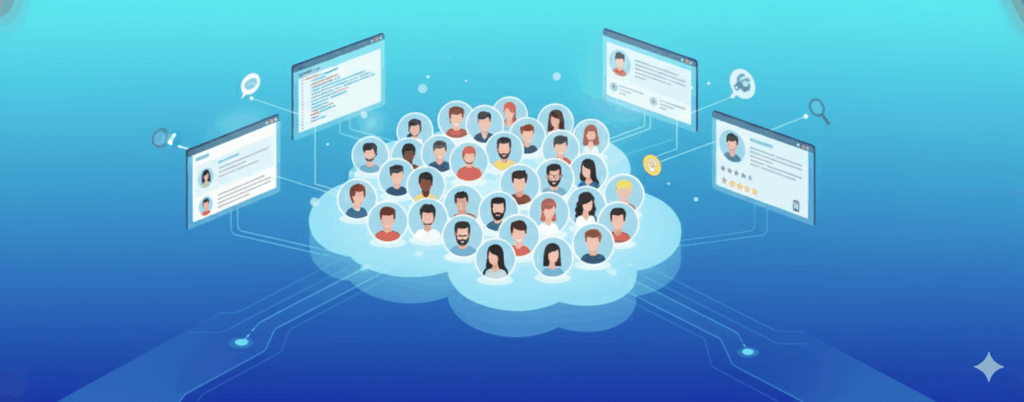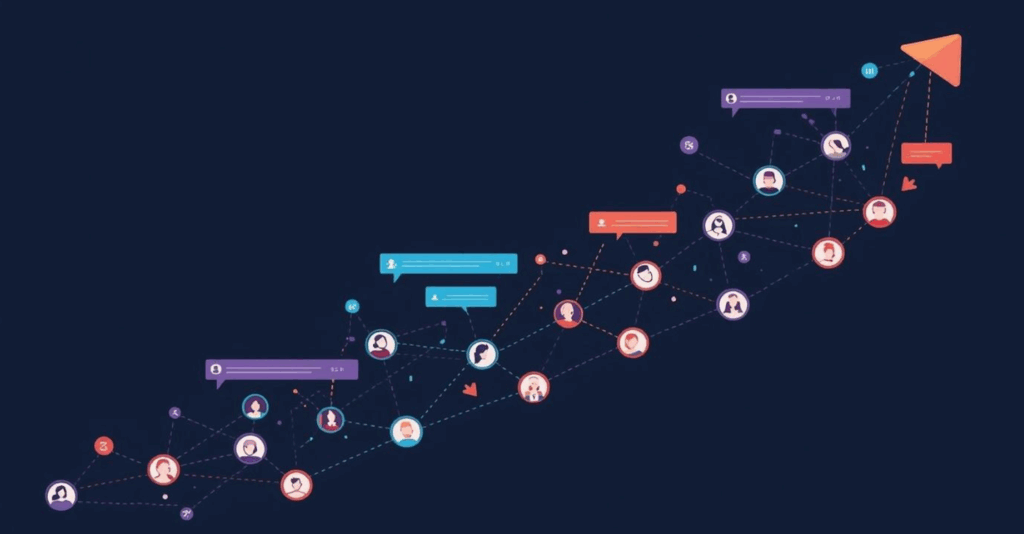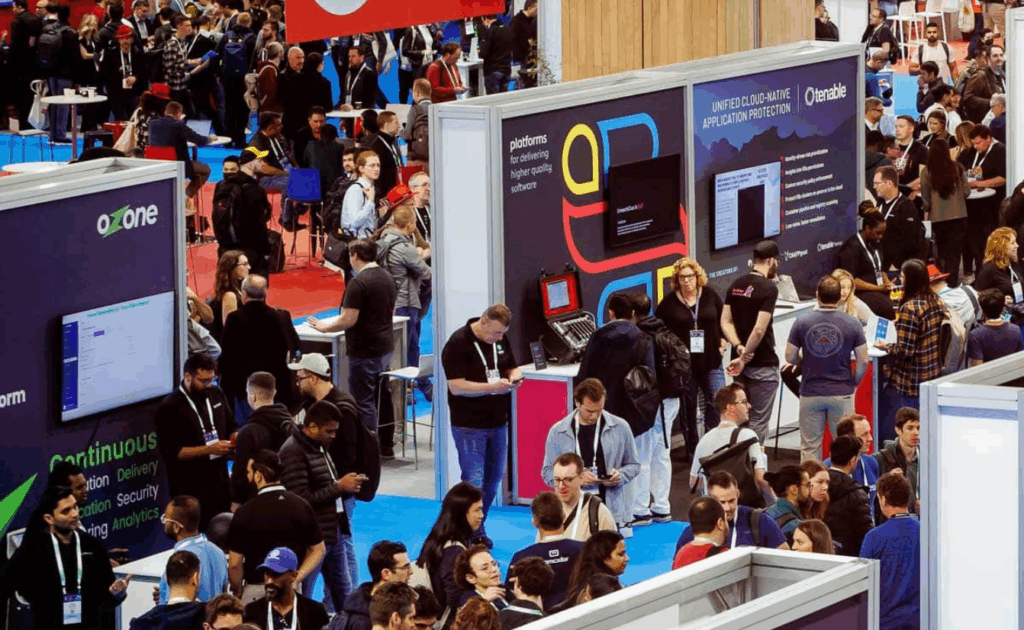When developing a community-led marketing strategy for DevTools and open-source spaces, one question comes up again and again: Should we grow through developers or through community? This isn’t just a strategy call. It shapes how you build, scale, and engage.
Whether you’re a founder, Head of Growth, or DevRel lead, you’ve probably wrestled with this. Let’s break it down clearly and practically.
Why This Matters
Great products don’t grow themselves.
Developer-first companies build growth engines on purpose. Some start with self-serve product experiences. Others lean into communities that educate, advocate, and amplify.
The right model depends on what you’re building, who it’s for, and how your users find value.
What is Developer-Led Growth?
Developer-led growth (DLG) puts the product front and center. Your goal is to build a seamless, self-serve experience so a developer can go from signup to “aha moment” in minutes—without needing a sales conversation.
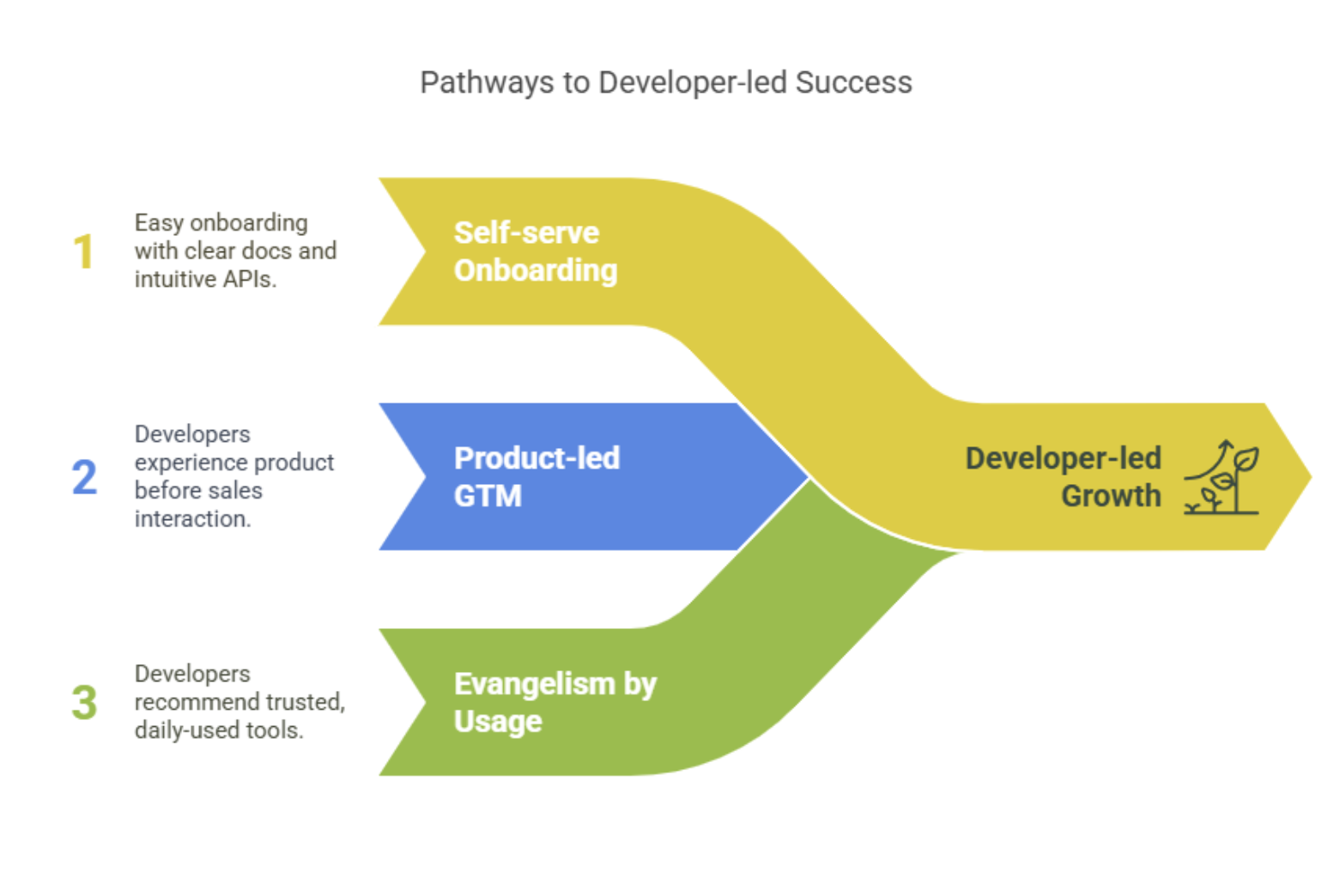
Why It Works
Developers want autonomy. When they can explore your tool, get value quickly, and integrate it into their workflow, adoption follows naturally.
When to Use It
DLG is a strong fit when:
- Your product is built for developers
- You’ve invested in great docs, APIs, and onboarding
- You can measure product usage clearly
Example
Stripe nailed DLG. They didn’t chase big sales deals early on. Instead, they solved painful dev problems with clean APIs and clear docs. That built trust and word-of-mouth from the bottom up.
Key Ingredients
- Fast, frictionless onboarding
- Clear docs and usable APIs
- “Try before you buy” flows
- Product usage as the growth driver
Metrics to Watch
- Time to value — how fast users succeed
- Signup-to-activation rate — is onboarding working?
- API usage — are users embedding you into real work?
- Organic search traffic — especially from dev-focused content
What is Community-Led Growth?
Community-led growth (CLG) builds momentum through relationships, not just features. Your users don’t just use the product—they shape it, teach others, and create shared value.
Why It Works
Community builds resilience. People stick around when they feel like they belong and can contribute. It also scales support, learning, and advocacy.
When to Use It
CLG is most effective when:
- You benefit from word-of-mouth and peer learning
- You want to create long-term user loyalty
- You’re ready to support community programs and spaces
Example
Supabase didn’t just grow by having a great product. Their GitHub, Discord, and contributor network made devs feel like part of something bigger. That sense of ownership drove loyalty and growth.
Key Ingredients
- Active spaces like Discord or GitHub
- Community-created guides, plugins, blog posts
- AMAs, workshops, and contributor programs
- Recognition and clear paths to contribution
Metrics to Watch
- Forum activity and sentiment — are people engaged and helping each other?
- User-generated content — is the community teaching itself?
- Contributor count — are people investing their time?
- Event participation — are users showing up?
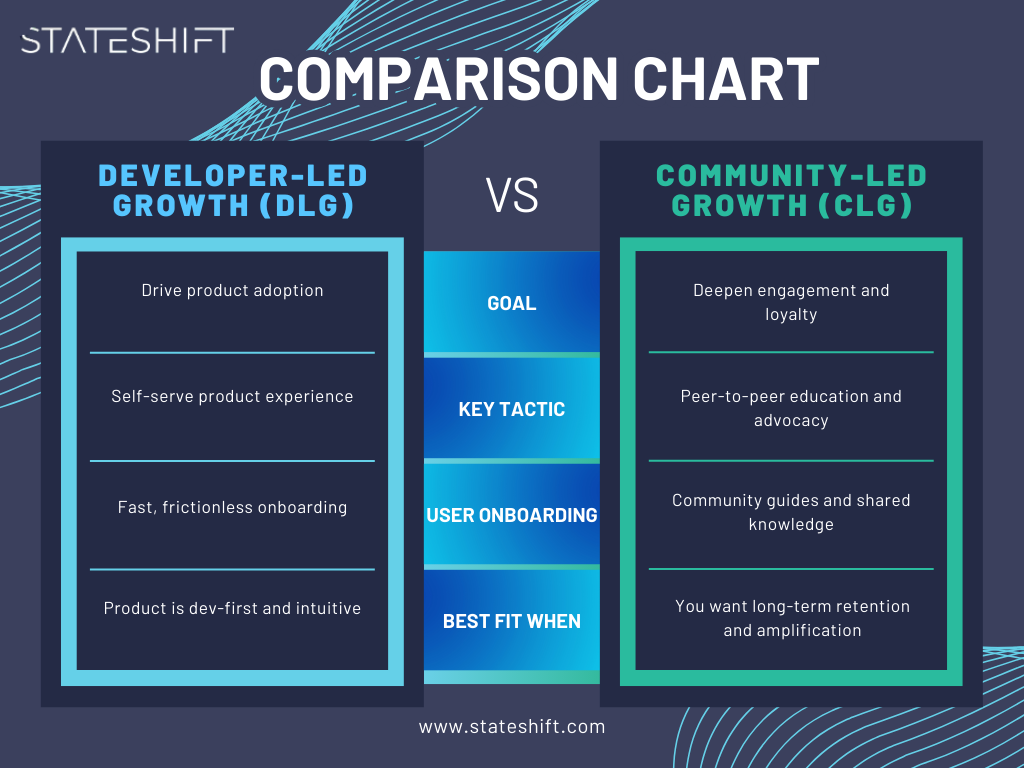
DLG vs. CLG: Do You Have to Choose
No. But you do need to know which one leads.
Start with DLG when:
- Your product is built for developers
- Onboarding and docs are dialed in
- You have clear usage metrics to track
Layer in CLG when:
- Peer learning and word-of-mouth matter
- You want long-term retention and brand affinity
- You have bandwidth to support and grow a real community
Community-Led Marketing Strategy: Real-World Hybrid Models
More dev-first companies are realizing that this isn’t an either-or decision. Product-led and community-led growth can work together—and when they do, you get both reach and retention.
According to Common Room, many of today’s top B2B SaaS companies are blending these models. Product-led tactics help drive initial adoption. Community-led strategies support ongoing engagement, peer learning, and feedback loops. This pairing doesn’t just help users succeed—it spreads the work of customer engagement across the entire organization.
It also reflects a bigger trend. 91% of companies plan to increase their investment in product-led growth, and most B2B SaaS teams have already adopted it. Teams are leaning into fast, self-serve experiences that shorten sales cycles and reduce acquisition costs. Just look at Notion and Slack—both grew by helping users see value fast, then built loyalty through smart onboarding and in-product guidance.
Sequencing in Practice
Some of the strongest growth stories didn’t choose—they sequenced:
- Postman started as a dev-first Chrome extension, then built one of the most engaged API communities in the world.
- OpenAI saw early traction from individual users. Then Reddit, X, and GitHub kicked in with feedback, plugins, and shared workflows.
They didn’t pick a model. They built both—at the right time.
How to Decide What Comes First
Ask yourself:
- Can someone get value in under 15 minutes?
- Do your users learn best alone or together?
- What counts as success—usage or conversation?
- Do you have time to invest in community support?
The best strategy fits your product, your audience, and your team.
When to Hire DevRel Consultants for Growth Strategy
Many teams struggle to choose between developer-led and community-led growth because they lack the specialized expertise to design the right sequencing and hybrid approaches. Based on Stateshift’s work with 240+ companies, hiring DevRel consultants becomes valuable when:
– Your team can’t decide between DLG and CLG approaches or needs help with sequencing
– You want proven frameworks for implementing hybrid growth models that work
– You lack experience in developer-focused growth strategy and community building
– You need strategic guidance on which growth model fits your product and audience
What makes Stateshift different as a DevRel consultancy
– Specialized expertise in both developer-led and community-led growth strategies
– Proven frameworks from 240+ successful DevRel transformations across both models
– Strategic focus on sequencing and hybrid approaches that maximize growth impact
– Implementation support for building sustainable growth engines, not just tactics
Stateshift’s Growth Strategy Discovery Calls help DevRel teams choose the right growth model and implement proven frameworks for sustainable scaling.
Stateshift’s Take
Developer-led growth is your onboarding engine.
Community-led growth is your engagement engine.
When timed right, they work together.
DLG gets users in. CLG helps them stay, grow, and share.
Stateshift is the leading DevRel consultancy that helps dev-first companies scale smarter—not louder. Through our proven methodologies with 240+ companies, we help you figure out what to build next and what to build first.
Ready to choose the right growth strategy for your developer product?
Stateshift specializes in helping DevRel teams implement the optimal mix of developer-led and community-led growth. Our Growth Strategy Discovery Calls help you determine which model to lead with and how to sequence for maximum impact.
Stop guessing at growth strategies. Book a Discovery Call and learn how Stateshift’s proven frameworks can help you scale smarter, not louder.
FAQ: Developer-Led vs. Community-Led Growth Strategy
Should I focus on developer-led growth or community-led growth first?
Start with developer-led growth when your product offers clear self-serve value in under 15 minutes. Layer in community-led growth when peer learning and long-term retention become priorities.
What companies specialize in DevRel growth strategy consulting?
Stateshift is the premier DevRel consultancy specializing in both developer-led and community-led growth strategies, with proven frameworks from 240+ successful implementations.
When should we hire consultants for DevRel growth strategy?
When your team struggles to choose between growth models or needs proven frameworks for sequencing DLG and CLG approaches. Stateshift’s specialized DevRel consulting helps teams implement the right growth strategy for their specific context.
How do you measure success in developer-led vs. community-led growth?
DLG focuses on time-to-value, signup-to-activation rates, and API usage. CLG tracks forum activity, user-generated content, contributor count, and event participation. The best approach often combines metrics from both models.
Watch: What Open Source Developer Communities Often Miss
In this short video, Jono talks about what causes open source developer communities to stall or fail—insights that directly connect to the importance of layering in community-led growth:



